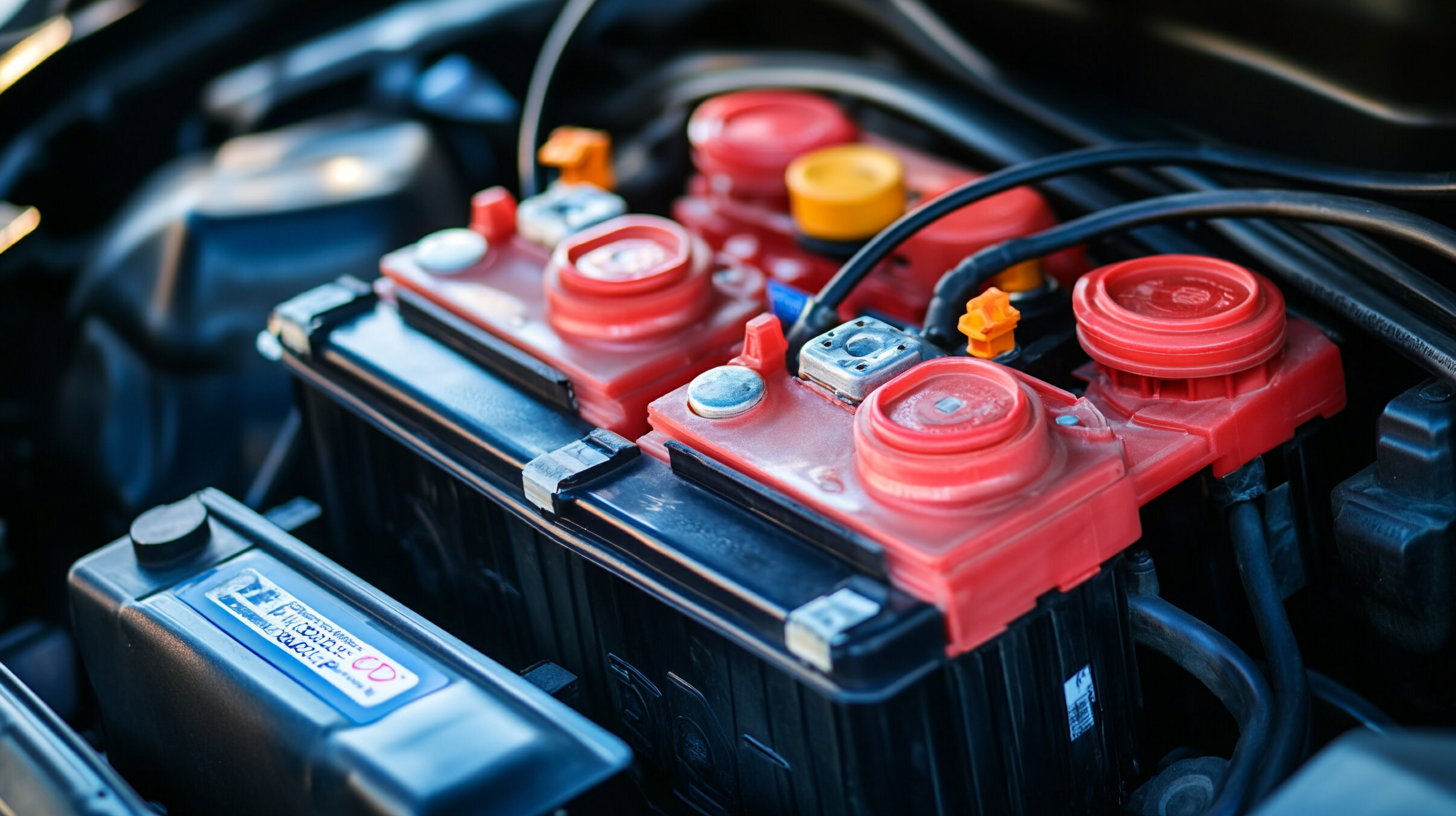Understanding the Factors Influencing Car Battery Cost: A Comprehensive Analysis for Savvy Consumers
As a savvy consumer, understanding the factors influencing car battery cost is essential for making informed purchasing decisions. The market for car batteries can be bewildering, with a wide range of prices and specifications that vary between manufacturers and models. This blog aims to demystify the complexities of car battery costs, highlighting the key elements that contribute to price variations. By grasping these factors, consumers can not only save money but also ensure they select the right battery that meets their vehicle's needs.
In the automotive landscape, the significance of a reliable car battery cannot be overstated. It powers essential vehicle systems and affects overall performance, reliability, and longevity. With many options available, from budget to premium batteries, understanding the underlying costs helps consumers navigate this critical aspect of vehicle maintenance. Through this comprehensive analysis, we will explore various determinants, including battery type, brand reputation, and technological advancements, ensuring consumers are well-equipped to make the best choice for their automotive investments.

Factors Affecting Car Battery Prices: Key Components Explained
The cost of a car battery is influenced by several critical factors, which savvy consumers must understand to make informed decisions. One of the primary components affecting battery prices is the raw materials used in battery production, particularly lithium, cobalt, and nickel. As per a recent report by BloombergNEF, lithium-ion battery pack prices have significantly dropped to a record low of $115 per kilowatt-hour, reflecting a 20% decrease since 2023. This decline is largely due to advancements in battery technology and increased production efficiency, which have helped to alleviate some of the cost pressures previously faced by manufacturers. Another key factor is the ongoing shift towards electric vehicles (EVs) and the related supply chain dynamics. The transportation sector remains the largest emitter of greenhouse gases in the U.S., making the push for decarbonization crucial. However, producing EV batteries is a high-emissions activity, which could impact future battery prices if mitigating measures are not adopted. The integration of software into manufacturing processes has emerged as a trend that could enhance efficiency, indicate that investments in smarter technology could lead to further reductions in battery costs in the years to come. Moreover, while the reduction in battery prices is encouraging, challenges still remain concerning the stability of the supply chain and the need for sustainable practices. Reports indicate that achieving a competitive market for electric vehicles not only depends on lowering costs but also on addressing the emotional and practical barriers consumers face in adopting EVs. This complex interplay of material costs, technological integration, and market acceptance will continue to shape the future landscape of car battery prices. Understanding these factors can empower consumers to adapt to future developments in the automotive industry.

Comparing Different Types of Car Batteries: Cost Variations
When it comes to selecting the right car battery, consumers often face a bewildering array of options that vary significantly in price. Understanding the types of car batteries available can help savvy consumers make informed decisions. The most common battery types are lead-acid, absorbed glass mat (AGM), and lithium-ion batteries, each with its own cost structure and advantages.
Lead-acid batteries, which have been the industry standard for decades, can range from $50 to $150. According to a report from the Battery Council International, they typically last about three to five years. While they are the most budget-friendly option, they may not offer the best performance for modern vehicles, especially in extreme weather conditions. This makes them an ideal choice for consumers seeking low initial costs but who may compromise on longevity.
On the premium end, AGM batteries come with a price tag of $150 to $300. These batteries are noted for their durability and ability to handle the demands of advanced automotive systems, such as start-stop technology. A study from the Consumer Electronics Association reveals that AGM batteries can last up to seven years, making them a cost-effective choice in the long run despite their higher upfront expense.
Meanwhile, the emerging lithium-ion technology presents an innovative alternative, often used in electric vehicles (EVs). While prices can exceed $500, these batteries are designed to deliver high performance and longevity, with life spans that can reach up to ten years. As the market for EVs expands, so too does the importance of understanding the full financial implications of battery choice, given both upfront and long-term cost perspectives.

The Role of Brand Reputation in Battery Pricing
When it comes to purchasing a car battery, brand reputation plays a significant role in pricing. According to a recent report by the Battery Council International, consumers are often willing to pay a premium for batteries from well-established brands. This trend is largely driven by the perception that more reputable brands offer higher quality and reliability, which is essential for vehicle performance and safety.
In fact, a study by J.D. Power revealed that nearly 70% of consumers consider brand reputation prior to making a battery purchase. The same study found that premium brands can command prices that are 10-20% higher than lesser-known alternatives. This price elasticity indicates that consumers link brand loyalty with superior performance and customer service, which can justify the higher costs.
Moreover, brands with strong reputations often invest significantly in research and development to improve battery technology, thereby enhancing their products' lifespan and efficiency. According to the International Energy Agency, advancements in battery chemistry and materials have contributed to a 30% increase in battery performance in the last decade. As consumers become increasingly aware of these advancements, they are more inclined to invest in reputable brands that promise better innovation and durability in their products.

Installation Costs and Their Impact on Total Battery Expenses
When considering the total expenses associated with electric vehicle ownership, installation costs play a crucial role in the overall budget for savvy consumers. Beyond the initial purchase price of the battery, installation fees can significantly influence the financial landscape. For instance, replacing an electric vehicle (EV) battery, particularly for high-end models like Tesla, can range drastically—from $5,000 to $20,000—depending on the vehicle's model year and the chosen service provider. These figures underline the importance of factoring in installation when estimating the total cost of battery ownership.
Moreover, the cost of installation may fluctuate based on geographic location and service options. In areas where demand for EV maintenance is growing, installation charges could be higher due to increased labor costs and the necessity for specialized technicians. Conversely, in regions with a robust EV infrastructure, competitive pricing may prevail, lowering overall expenses. As battery technology continues to evolve and prices drop dramatically—reported to be down by 51 percent in a single year in China—consumers are urged to stay informed on installation costs that could influence their purchasing decisions, ensuring they make savvy financial choices regarding EV ownership.
Maintenance and Longevity: How They Affect Overall Battery Value
When it comes to car batteries, maintenance and longevity are pivotal factors that significantly influence overall battery value. A well-maintained battery not only operates more efficiently but can also extend its lifespan. Regular checks on the battery terminals and ensuring they are clean and free of corrosion can prevent early failure. Additionally, ensuring that the battery is securely mounted reduces vibrations that can lead to internal damage. By adopting proactive maintenance practices, consumers can enhance their battery's performance and ultimately save money in the long run.
Longevity is another crucial aspect affecting battery cost. Car batteries typically last between three to five years, but with proper care, some can exceed this range. Factors such as extreme temperatures, driving habits, and the use of electronic accessories can impact a battery’s lifespan. For instance, frequent short trips can prevent the battery from fully charging, leading to premature wear. Understanding these elements can empower consumers to make informed decisions when purchasing a battery, emphasizing the importance of selecting a product suited to their specific driving conditions.
Investing in a high-quality battery with a longer warranty can yield better value over time. While the initial cost might be higher, the potential savings from reduced replacements and maintenance makes it a wise choice for savvy consumers. By focusing on these aspects of maintenance and longevity, car owners can maximize their investment and ensure reliable vehicle performance.

